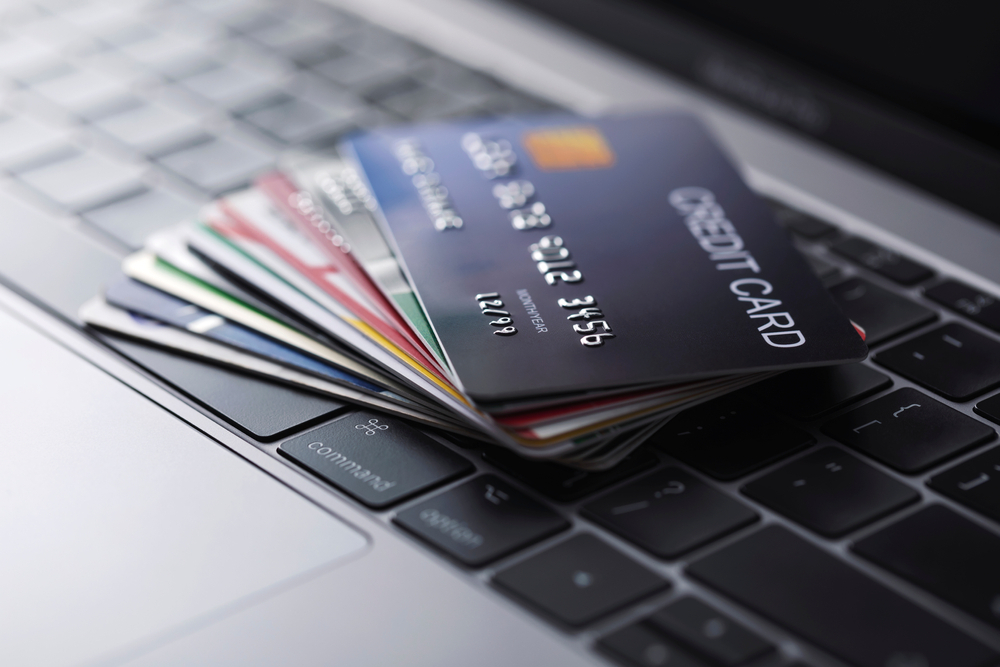What is a Credit Card
Credit card is a debit card that can be used to buy, pay off debts, or by going with a card, to withdraw money. An easy way to think of a credit card as a type of temporary loan. When you open a credit card account, your credit card company offers you a set of credit limit. This is actually a credit card company that allows you to use it to buy or pay off debts. Your available credit goes down as you charge items on the card. You then return what you have used from your credit limit to the credit card company.
Credit card allows you to access the credit limit provided by your credit card provider. Your credit limit is the maximum amount you can borrow. Instead of giving you a full loan in cash, the card issuer allows you to take out the credit limit as much as possible at a certain time. As you repay what you borrow, you can borrow again.

Credit cards allow you to borrow money from a bank under an agreement that you will repay the loan on your due date or incur interest.
The ability to buy now and pay later goes beyond other payment methods, such as bank cards or cash, which require you to have money paid at the time of purchase. In addition to having more flexibility with payment, credit cards help you get credit points, so you can get other financial products, such as loans and loans.
There can also be some cash credit card benefits, where cardholders can earn rewards on all purchases, which can also be paid for travel, statement fees and more. Some credit cards also offer interest rates.
And with laws like the CARD Act and the Fair Credit Billing Act that help regulate the industry and provide higher levels of protection against fraudulent purchases, credit cards are much safer compared to other payment methods.
How a credit card works

Credit cards can be used to shop online or in stores and pay off debts. If you use each credit card, your card details will be sent to the merchant’s bank. The bank then obtained authorization from the credit card network for processing. Your card issuer must verify your details and approve or reject the transaction.
If the transaction is approved, payment is made to the merchant and your credit card debt is reduced by the amount of the transaction. At the end of your payment cycle, your card issuer will send you a statement showing all the transactions for the month, your previous balance and new balance, the amount you have paid for and your due date.
Grace period is the time between the purchase date on your card and the due date written on your statement. At this time if you pay your debt in full on the due date, there are no additional interest payments.
But if you manage your balance every month, your card issuer can charge interest. A percentage of your credit card or APR indicates the cost of managing the balance for the year. Your APR includes both your interest rate and other costs, such as the annual fee if your card is available.
What is the credit card limit?

Credit card limits The maximum amount that the lender will allow the consumer to use using a credit card or credit card line. Limits are determined by banks, other lenders, and credit card companies and are based on much information related to the borrower. These lenders check the borrower’s debt rating, personal income, credit history, and other factors.
Credit card limits can be set for both unsecured credit and secure credit. Unsecured credit with restrictions is often in the form of credit cards and unsecured credit lines. If the credit line is secured – supported by collateral – the lender considers the collateral amount. For example, if someone takes out a home loan line, the credit limit varies accordingly to the borrower’s home.
Lenders will not issue a maximum credit limit to a person who is unable to repay it. If the consumer has a high credit limit, it means that the borrower views the borrower as a less risky borrower. The borrower has a lot of power to use with a higher credit limit.
How credit card limit is decided

Credit card companies determine your credit limit through a complex process called transaction, which works according to mathematical formulas, large-scale testing and analysis. The details of the process are protected because it is the way the company makes money. The essence of the matter is that this calculation system helps the company to decide who will agree, at what price and at what limit. The higher the credit limit, the more the company proves that the borrower expects to repay the loan. Here are some basic principles that credit providers use to determine your credit value.
Pre-Setted Credit Card Limits
Most credit cards are pre-programmed with a credit limit. This means that once the credit provider has determined the quality of your credit they will allocate the remaining dollar balance to your account for new purchases and / or transferred balances. This limit is preset. It can be increased over time or at the request of customers if your credit scores approve and the credit card issuer intends to extend the additional credit.
Cards with No-Preset Limits Credit
Some premium credit cards and charging cards come with unrestricted and robust credit limits, which means they can grow or contract according to your real moral and ethical needs. However, when large purchases are expected the dynamic credit line tends to accept non-pattern spending because there is flexibility built into these types of credit limits.
How credit card interest is calculated

Your credit card purchases are below the standard interest rate called the Annual Percentage Rate, or APR. This number will vary from card to card and from person to person depending on factors such as credit scores. Your APR is set by age, but credit card companies use it to calculate costs during your monthly statement period. Therefore, as “miles per hour” is a measure of speed over an hour, the APR measures interest in the season. But in both cases, the measure can be used for longer or shorter periods.
To find out how much you pay interest on your balance each day, you can turn your APR into a daily percentage rate. To do so, divide your APR by 365, the number of days in a year. At the end of each day, the card issuer will increase your current balance with a daily interest rate. That charge is added to your balance the next day, a process called aggregation.
If you have ever had a balance on your credit card, you may remember the feeling of being hit with interest. And if you tried to count it, you probably realized that it didn’t mean much to you.
Credit card issuers refer to the card interest rate each year, as your annual percentage rate (APR), but in most cases your interest rate is added daily.
The only condition that could lead to interest on a balance out of grace period could be if you have a 0% APR period or if your current card issuer stops interest due to coronavirus.
Suffice it to say – it is important that you take a moment to understand how interest works.
How to calculate credit card interest

- Turn your APR into a daily rate
- Find your daily average balance
- Calculate your interest costs
1. Turn your APR into a daily rate
Most credit card issuers charge interest on a daily basis. This means that your interest can be felt in your main (real) balance at the end of the day.
To ensure that interest rates are accumulated on a daily basis, review your card member agreement There will be a section below interest rates and fees that say something like: “How do we calculate your balance?”
2. Find your daily average balance
This step is very tedious because you will need to know what your daily balance was during the payment cycle. For example, if your billing cycle is 25 days long, you will need to know your exact balance for every 25 days. You will also need to respond to any outstanding balances from the previous payment cycle as well as any new payments made within your current payment cycle.
If you do not have a balance from the previous payment cycle and did not make any payments during the current cycle, the calculations are a little easier.
3. Calculate your interest rate
Now that you have found both your daily balance and daily rate, you can calculate your interest rate. This can be done by multiplying your average daily balance by a daily rate, and multiplying that number by the number of days in your payment cycle.
How to Apply for a Credit Card

Credit Card Eligibility
People who want to apply for a credit card must meet the following eligibility criteria.
- Terms of age
To apply for a credit card, you must fall within the age limit set by the bank. The applicant must be at least 18 years old. Anyone who falls below this age limit can apply for a credit card. In addition to the credit card holder must be 18 years or older.
- Ways to Make Money
You must have a standard income to get a credit card. Ways to earn money vary depending on the features and specifications of the card. You can get a credit card compared to your fixed deposit and a small income set by the bank. Revenue requirements may vary for different cards depending on the details and features.
The customer must show proof of receipt of a fixed amount to obtain a credit card. You can be a paid employee working for an established company or a self-employed professional who runs your business.
You can apply for a credit card, online and offline. Thanks to the COVID-19 epidemic, the credit card application process has been computerized, making it easier and faster.
Online Credit Card Application Process
- Step 1: Compare the provision of a credit card
- Step 2: Choose from the top cards offered by leading Indian banks
- Step 3: Check your eligibility by entering a few personal details
- Step 4: Enjoy immediate online approval after completing your application form
Alternatively, you can apply for an online card on the bank’s website by following these steps:
- Step 1: Visit the bank’s website.
- Step 2: Check the cards offered by the bank.
- Step 3: Use the comparison tool if available to compare their features and benefits.
- Step 4: Select the appropriate card yourself and press the ‘Apply’ button.
- Step 5: Fill in the required information and upload all the required documents.
- Step 6: Submit your form.
How we can help you get a credit card

Credit Bazaar is here to take care of your Credit Cards requirements from choosing a company to get a credit card in your hand. Now after you’ve enjoyed your cards and you start not sleeping at night because you can’t make credit card payments on time and as a result you have a huge gap in your credit score. You can get help from credit providers to get professional advice on the challenges you are facing. Once you have registered, credit bazaar will send you a monthly credit report with CIBIL score in your inbox. They also mark red flags, and you can talk to their experts when confusion arises.
Not only that, the Credit Bazaar is affiliated with many lenders throughout the region and when the time comes, and you need a loan, you can easily get one on their website.
